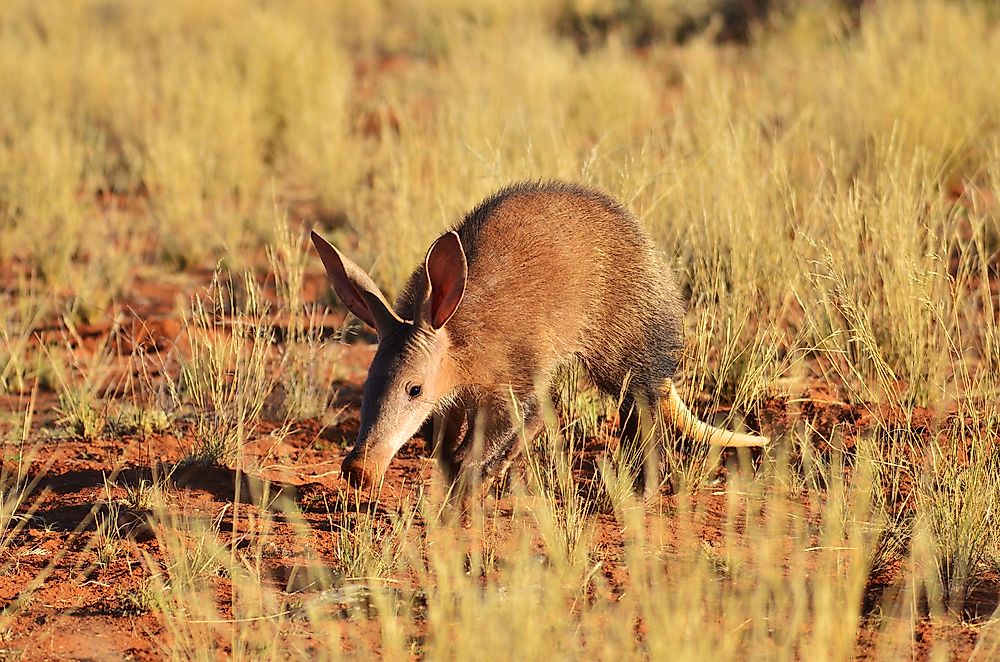Aardvark Facts - Animals of Africa

The aardvark is an animal which is mainly found in sub-Saharan Africa. Resembling a pig, the animal mainly feeds on ants and termites. In this article, the aardvark's behavior, diet and habitat will be analyzed.
4. Physical Description
The aardvark is also known as the African ant bear. The name comes from the Afrikaans language meaning “earth pig” due to its burrowing behavior. It has some similarities with the domestic pig. The aardvarks rear limbs are longer than the front limbs and it has a prominently arched back. The rear limbs have five toes while the front ones have four toes. Each toe has one large nail. An adult aardvark weighs an average of 150lbs and can reach a height of 24 inches. It is sparsely covered with pale yellowish-gray coarse hairs. In captivity, aardvarks have a lifespan of 23 years.
3. Diet
The aardvark is a solitary creature which feeds on ants and termites, except for the African ant and the red ant. The stomach of the aardvark has a muscular pyloric area that grinds swallowed food, making chewing food unnecessary. This feature is similar to the gizzard of a chicken.
2. Habitat and Range
Aardvarks inhabit savannas, grasslands, woodlands and bush lands. Their primary food is ants and termites. They tend to shy away from swampy and rocky terrains because they can cause problems in the burrow digging process. In Africa, aardvarks are present throughout the mainland continent except for on the Ivory Coast, Namibia, and Ghana. Their stringent diet requires them to inhabit a large area for foraging. An aardvark has three types of burrows which can be used for resting, living, or foraging. The living burrows generally have multiple entrances, are complex, and can reach up to 45ft deep.
1. Behavior
The aardvark is generally a quiet animal that makes soft grunting noises while foraging which become louder when going into its tunnel entrance. Due to its nocturnal nature, aardvarks begin foraging in the late afternoon. During the day, it burrows to evade the harsh sun. The aardvark has many predators which include lions, dogs, hyenas, pythons, and humans. It uses its strong sense of smell to help stay away from its predators. While under attack, aardvarks are known to excavate their burrow extremely fast or run in a zigzag motion. Their claws give them the ability to attack their aggressors. After the seven month gestation period, a cub weighing around 4lbs is born. At the age of two weeks old, the cub begins accompanying its mother to forage. The cubs are weaned after 16 weeks. At six months of age, the cub begins digging on its own but stays with the mother until the following mating season.











